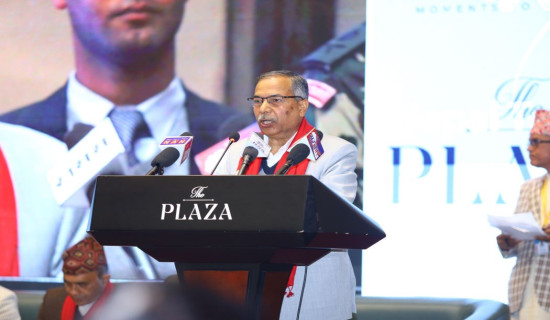- Thursday, 18 December 2025
China’s Focus On New Energy Industry
Politicians in some countries have tried to exaggerate the "China's new energy overcapacity theory", accusing China's new energy industry of relying on subsidies for large-scale exports, and clamouring that "China's export of excess production capacity threatens the industrial development of other countries and impacts the world economy." The so-called "China's overcapacity" goes against commonsense and facts. It is essentially a new trick of "double standards" and trade protectionism, and is a completely false proposition.
Open market
Equating China's export products with overcapacity does not align with economic commonsense or objective reality. In the context of globalisation, the amount of production capacity is determined by the relationship between supply and demand. As an open market integrated into globalisation, Chinese new energy companies must consider both domestic and international perspectives and resource allocations.
If each country only produced to meet domestic demand, there would be no cross-border trade. In recent years, the increase in exports of Chinese electric vehicles, lithium batteries, and photovoltaic modules results from international division of labour and market demand. Linking overcapacity issues with international trade and claiming that an increase in exported goods indicates overcapacity is completely unfounded.
In fact, there is a severe global shortage of green capacity rather than an excess. Take new energy vehicles as an example, according to the International Energy Agency, global demand for new energy vehicles is expected to reach 45 million units by 2030, 4.5 times the demand in 2022. The global demand for new photovoltaic installations will reach 820 gigawatts, about four times the amount in 2022. Especially with over 130 countries and regions proposing carbon neutrality goals, the global demand for green capacity far exceeds production. Considering the enormous potential on the demand side globally, China's green capacity is in short supply, and the notion of "impacting the world market" is baseless.
Nowadays, both supply and demand are global, and the levels of production capacity in different countries are determined by their respective comparative advantages, an economic principle that is not subject to people’s will. The competitiveness of China's new energy products primarily stems from the early establishment of the related industries, long-term research and development investment that has resulted in leading technological advantages, and the comprehensive competitive edge formed by leveraging strong domestic industrial support, a large-scale market, and abundant labour resources.
The popularity of Chinese new energy vehicles abroad demonstrates that the competitive advantages of China's related capacities are determined by global market demand and the efficiency of Chinese enterprises, reflecting the functioning of market principles.
Some people labelled China's new energy industry as "overcapacity" out of underlying protectionism. Their hype about China's so-called "overcapacity" is an excuse to set up trade barriers and restrict Chinese exports. What is truly excessive is not China's new energy capacity but the abuse of protectionism and attempts to suppress the legitimate development of other countries.
These false narratives about China's "overcapacity" aim to hinder the development of Chinese industries and seek more favourable competitive positions and market advantages for their own countries. Protectionist actions will not make them better but will disrupt the stability and smoothness of supply chains, hindering the global green economic transition and the development of emerging industries.
With the sharp increase in global fossil fuel prices due to the Russia-Ukraine conflict, Nepal is seeking more economical and efficient energy solutions. The Nepali government has also stated that maximising the use of new energy vehicles is vital for the economy, environment, and individual health. Data shows that Chinese brands such as BYD, SAIC MG, Changan, GAC Trumpchi, Chery (OMODA), and King Long have become the main brands Nepali people consider when purchasing new energy vehicles. Since 2023, sales of Chinese new energy vehicles in Nepal have repeatedly hit new highs, fully demonstrating the recognition of Chinese new energy vehicles' technological innovation and driving quality by more and more Nepali consumers.
Assembly plants
Some Chinese investors are considering establishing electric vehicle assembly plants in Nepal to deepen cooperation with Nepali partners in the automotive industry chain, which will inject new momentum into Nepal's economic development, provide more job opportunities, and help Nepal achieve its grand goal of "zero emissions" as soon as possible. Facts speak louder than words.
I firmly believe that the cooperation between China and Nepal in the field of new energy will continue to deepen, and the trans-Himalayan friendship between the two countries will be renewed with new vigour in the new era. The fallacy of the so-called "overcapacity of China's new energy industry" will ultimately collapse on its own!
(Chen Song is China's Ambassador to Nepal.)
















